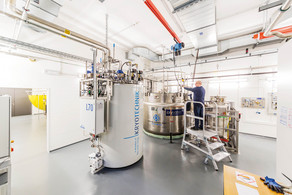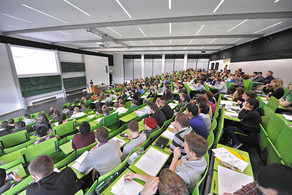Thesis defense of Alexander Kononov
- Defense
In this study, C60 molecules and Bi clusters are investigated on the surfaces of two noble metals (Au(111) and Ag(111)) and on the surface of Al2O3| |Ni3Al, characterized by very low conductivity. For the investigation, Ultraviolet Photoelectron Spectroscope (UPS) and Scanning Tunneling Microscope (STM) are used in ultra-high vacuum (UHV). On the Al2O3| |Ni3Al surface, both C60 and Bi clusters exhibit a noticeable shift of the photoemission signal due to the influence of the charging energy: in the case of C60, this shift is attributed to the energy shift of the HOMO, while for Bi clusters, it is visible for the shift of the core level. Conversely, minimal shifts is observed on metal surfaces. For C60, the shift originates from the reduction in charging energy induced by next-neighbor screening, whereas for Bi clusters, it is attributed to the increase in cluster size, with the influence of the Ni3Al(111) surface playing a significant role in the change of core level shift. Both effects are explained within the electrostatic approximation, which overlooks quantum mechanical effects like local electron density distribution or electron spill-out, yet still yields excellent agreement with experimental results. Furthermore, STM investigations reveal evidence of Bi cluster adsorption on the periodic superstructure of the Al2O3| |Ni3Al surface, and potentially even adsorption of C60 molecules on the periodic structure of the Al2O3| |Ni3Al network.









